#tocweek2023
Text
Melian and her Descendants as Native Aotearoa Birds
For day 4 @tolkienofcolourweek
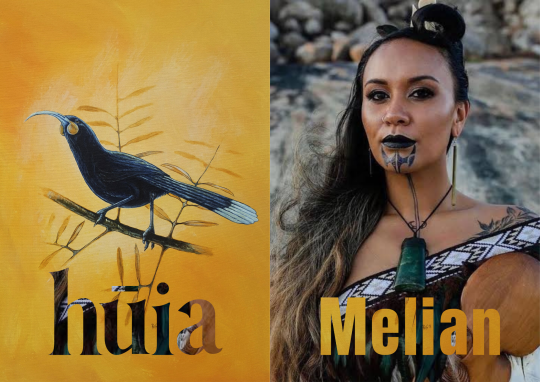
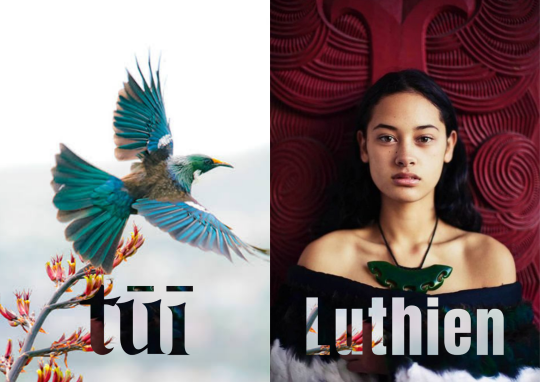



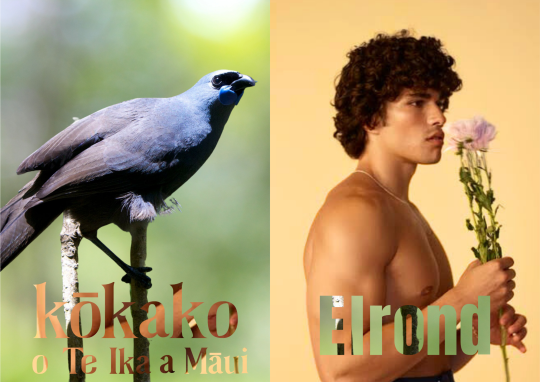


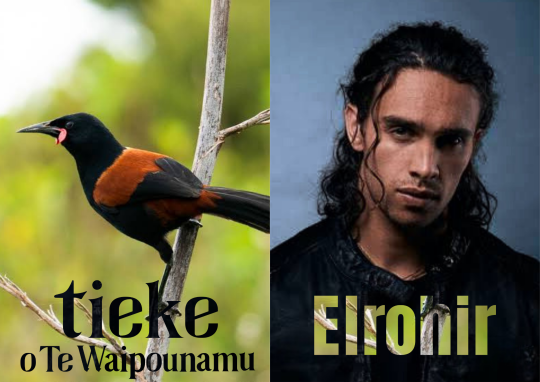

A detailed image description is at the bottom of this post but I've listed the characters and their matching birds below.
Melian: hūia. A sacred bird, often considered to be one of the most beautiful birds in Aotearoa. Their feathers were traditionally only worn by people of high status.
Hūia were forest songbirds who paired for life and were utterly devoted to their partners. The pairs would fly and hunt together, caressing each other with their bills, singing duets back and forth. Often when a hūia died, its partner would die of grief a few days later (typically due to failing to eat or drink).
There was a sharp decline in the numbers of hūia after the arrival of European settlers in the 1840s. By the early 20th century, they had disappeared from our forests forever.
Lúthien: tūī. The most talented of our songbirds, a stunningly beautiful creature with iridescent blue-black feathers. Their double voicebox allows them to mimic almost any sound, including human speech. They often sing all day long.
Tūī are messengers to the gods. In Māori culture we might compliment a singer by saying that they have korokoro tūī, the throat of a tūī.
Also I'm feral about this quote:
Farmer and ornithologist Herbert Guthrie-Smith, writing in the early 20th century, observed of a female tui singing on the nest (tui are the only bird in the world to sing on the nest): “We were close to her, yet she sang as if her song could have no ending, as if the world was too full of the ecstasy of life for wrong and rapine to exist. The sun was shining above the flowing river, the leaves green, of every shape and shade; her great love had cast out fear.”
(Source)
Díor: kōtare, aka the sacred kingfisher. (Yes, okay, this is partially a joke about Dior being a sacred king.) Although kōtare are native to Aotearoa, they're also found in other countries. Most Eastern Polynesian cultures, including many Māori iwi, believe that kōtare have power over the ocean and waves.
Kōtare can sit motionless for hours while waiting for their prey, watching with perfect stillness. For this reason, a person who is alertly watching for enemies is sometimes compared to a kōtare.
Elured and Elurin: tara iti, aka fairy terns.
For Māori, terns in general are associated with people of high status. Tara iti are the smallest species of tern in Aotearoa, weighing in at about 70 grams (or 2.5 ounces). They're also our rarest breeding bird. Sadly, there are only about 40 individuals left.
Elwing: kōtuku - I expanded on this in another post
Elrond and Elros: North Island kōkako and South Island kōkako (respectively). Kōkako are blue-grey songbirds who often have a similar call to tūī, although with a slightly less extensive range of sounds. They love to sing duets; in fact, they sing the longest known duets of any bird in the world.
The North Island and South Island kōkakō are closely related but distinct sub-species. Although the North Island kōkako has been the subject of a successful conservation campaign, the South Island kōkako is considered possibly extinct. (The last two reliable sightings were in 2007 and 1967.) However, some people who walk the remote tracks of the South Island swear they've heard it singing.
Elladan and Elrohir: tīeke, aka the North and South Island saddlebacks. The two species are very difficult to tell apart for all but the most trained eyes. They're close relatives of kōkako and hūia.
Tīeke are notoriously fearless. In Māori culture, they're guardians and guides.
Arwen: Chatham Islands tūī. While these birds look extremely alike to mainland tūī, they sing a very different song.
(Since this bird is from the Chatham Islands, the Arwen faceclaim is a Moriori woman. Moriori are the indigenous people of the Chathams.)
Image description below cut due to length.
A series of paired images. Each pair has one bird and one faceclaim. All of the faceclaims, except for Arwen, are Māori.
1: Hūia and Melian. The hūia is a black bird with an orange wattle, long curved beak, and white at the end of its tail feathers. Melian is a dignified woman with light brown skin, brown hair, and a traditional chin tattoo. She wears traditional clothing and a pounamu (greenstone) ornament around her neck.
2: tūī and Luthien. The tūī is in flight. The light has caught its wings and tail feathers, making them look a vivid blue. Luthien is a light-skinned (but distinctly Māori) woman with long dark hair. She wears a black dress and a pounamu necklace.
3: a kōtare and Dior. The kōtare is a blue/black bird with a white neck and underside. It's in flight, carrying something in its mouth. Dior has dark brown skin and facial tattoos that mark him as someone of high rank. He wears a carved bone ornament in his hair, a pounamu necklace, and a traditional feather cloak.
4: tara iti and Elured and Elurin. The tara iti is visible from behind, its white wings spread, either landing or taking off. Elured and Elurin are infants swaddled in blankets side by side.
5: Kōtuku and Elwing. The kōtuku is a gorgeous white bird with a long neck and stilt-like legs. This one standing on a tuft of grass surrounded by water, looking down at its reflection. Elwing is a light-skinned, dark haired pregnant woman wearing a white cloak and cradling her stomach.
6: North Island kōkako (kōkako o Te Ika a Māui) and Elrond. The kōkako is a blue-grey bird with a black beak and blue wattle. The Elromd faceclaim is Alex Aiono (Ngati Porou, Samoa), a man with light brown skin and dark curly hair. In this photo he's shirtless, holding a flower and facing the righthand side of the image.
7: South Island kōkako (kōkako o Te Waipounamu) and Elros. The kōkako looks very similar to the bird above except for its orange wattle. The Elros faceclaim is also Alex Aiono, but in this image he's standing on a beach in front of the sea, smiling.
8: North Island saddleback (tīeke o Te Ika a Māui) and Elladan. The tīeke is a medium sized bird with a red wattle and mixed black/red-orange plumage. My Elladan faceclaim is Jordi Webber (Te Atiawa, Ngāti Toa, Te Arawa, Ngāti Raukawa, Ngāti Maniapoto). He's a young man with pale brown skin, wavy black hair, and grey eyes.
9: South Island saddleback (tīeke o Te Waipounamu) and Elrohir. He is also represented by Jordi Webber.
10: Chatham Islands tūī (tūī o Rēkohu) and Arwen. This tūī is sitting on a flax plant, but it looks very similar to the tūī photo from earlier. It has blue-black plumage, a white tuft at its throat and orange pollen on its head. The Arwen faceclaim is a smiling Moriori woman in front of trees. She has long brown hair, light brown skin and a white dress.]
#melian#luthien#dior#elured#elurin#elwing#elrond#elros#elladan#elrohir#arwen#silmarillion#tocweek2023#māori-fying tolkien#mine#long post#thank u to Toi for showing me how to do the letters thing#i very definitely didn’t overdo it in the slightest
262 notes
·
View notes
Text




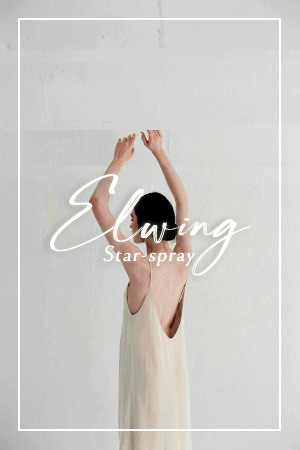

@tolkienofcolourweek 2023 Day 6: Mixed ⇢ Elwing
The sons of Dior and Nimloth were Eluréd and Elurín; and a daughter also was born to them, and she was named Elwing, which is Star-spray, for she was born on a night of stars, whose light glittered in the spray of the waterfall of Lanthir Lamath beside her father's house.
#tocweek2023#silmedit#tolkienedit#silmarillion#elwing#litedit#fantasyedit#oneringnet#tolkiensource#sourcetolkien#booknet#userlyndeth#tuserosie#usertilions#southfarthing#userhaleths#userelisha#the silmarillion#my edit*#q
137 notes
·
View notes
Text

Tolkien of Colour Week 2023, 31 July - 6 August
Any form of content is welcome 🙂 Tag @tolkienofcolourweek in your post and #tocweek2023. My main is @brighter-arda-main, if I dont like your post within 48 hours please message me.
This year there is a Ao3 collection!
The prompts below are only suggestions, you do not have to use them. There are two sets of prompts - Peoples | Themes. You can use both sets of prompts or just one.
Day 1: Ainur | Faith, Hope, Festivals
Day 2: Elves | Home, Lands, Journeys
Day 3: Men | Ancestors/Descendants, Tradition, Stories
Day 4: Dwarves | Music, Artwork, Clothing
Day 5: Hobbits | Family, Friendship, Romance
Day 6: Mixed | Community, Language, Belonging
Day 7: Freeform | Intersectionality, Sexuality, Gender, Intersex, Disability
Happy creating!
198 notes
·
View notes
Text

@tolkienofcolourweek Day 1: Ainur
I drew Varda and based her design off Hindu deities. I love Valinor having South Asian influences
94 notes
·
View notes
Text


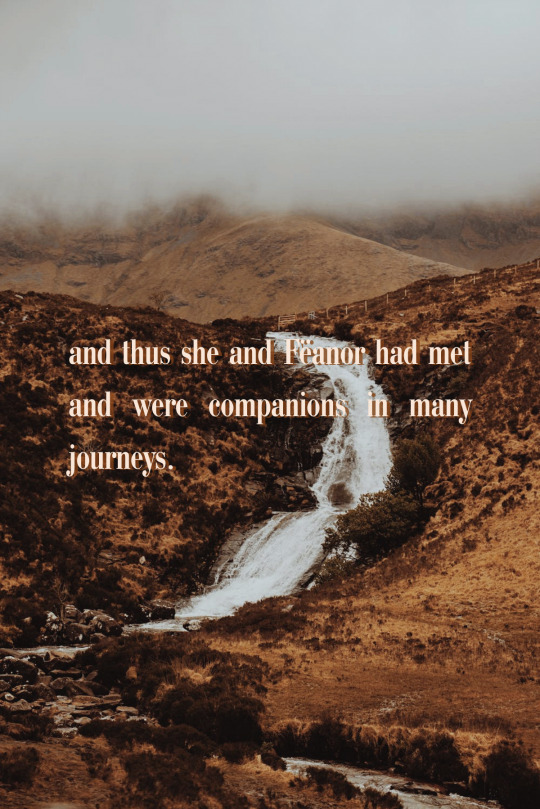
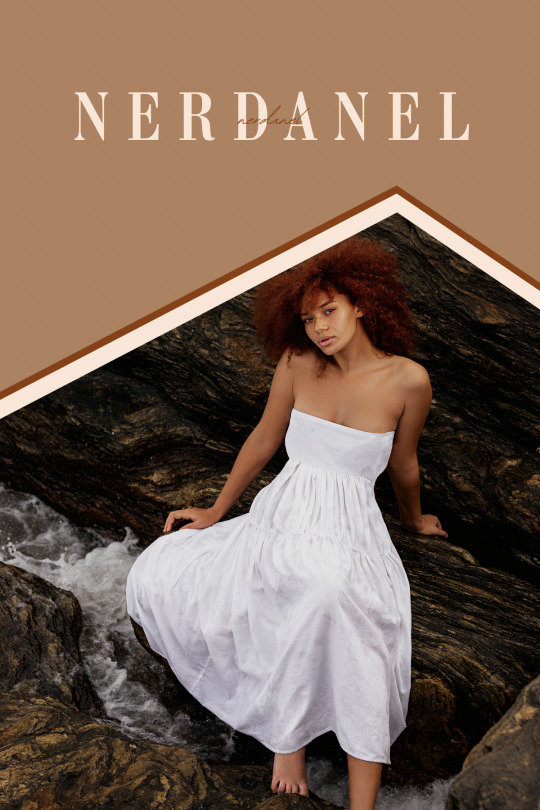
"She also was firm of will, but she was slower and more patient than Fëanor, desiring to understand minds rather than to master them. When in company with others she would often sit still listening to their words, and watching their gestures and the movements of their faces. Her mood she bequeathed in part to some of her sons , but not to all. Seven sons she bore to Fëanor, and it is not recorded in the histories of old that any others of the Eldar had so many children. With her wisdom at first she restrained Fëanor when the fire of his heart burned too hot; but his later deeds grieved her and they became estranged."
- J.R.R. Tolkien, Morgoth's Ring, "The Later Quenta Silmarillion (II): Of Fëanor and the Unchaining of Melkor"
@tolkienofcolourweek || day 2: elves + journeys || nerdanel the wise
[ID: an edit comprised of four posters in brown and rusty red with some grey and white accents.
1: Rayan El-Mahmoud, a lebanese-ghanaian model with light brown skin, freckles, and coily reddish hair. She is in front of some rocks, leaning her head on one hand while looking towards the viewer, and is wearing a strapless white dress. The image points down from the top of the poster and is framed in orangey-red and white on a brown background. Text underneath reads "nerdanel" in a large red font and a very small cursive one in white / 2: A craggy mountain surrounded by scree. Text in the same colors as the frame from Image 1 reads "In her youth she loved to wander far from the dwellings of the Noldor; either beside the long shores of the Sea or in the hills;" / 3: Brownish-orange hills with a river running down through them. Text in the same format as Image 2 reads "and thus she and Fëanor had met and were companions in many journeys." / 4: Rayan El-Mahmoud, this time standing leaning against the rocks and looking up at the viewer. The colors and positioning of the smaller image are reversed, as are the colors of the text /End ID]
#edits with the wild hunt#brought to you by me#tocweek2023#nerdanel#the silmarillion#mepoc#described#posters#silmedit#tolkienedit#tolkiensource#elvensource#oneringnet#fc: rayan el-mahmoud#elves elves elves
100 notes
·
View notes
Text

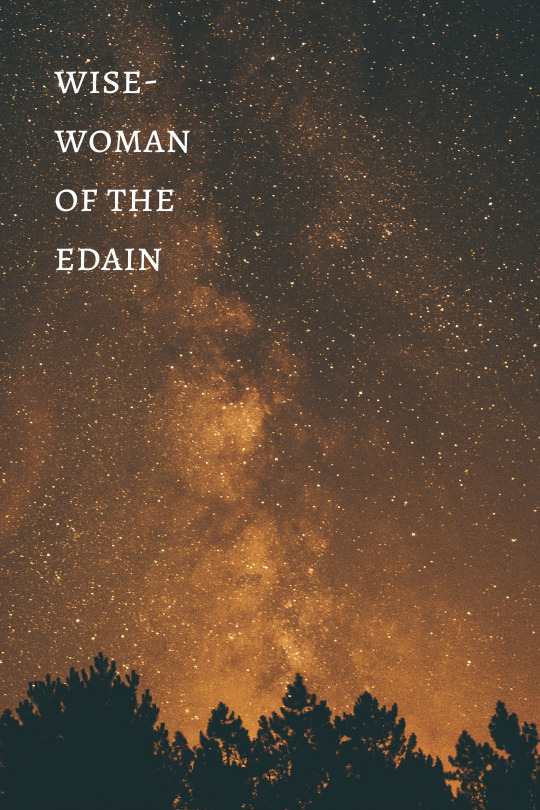

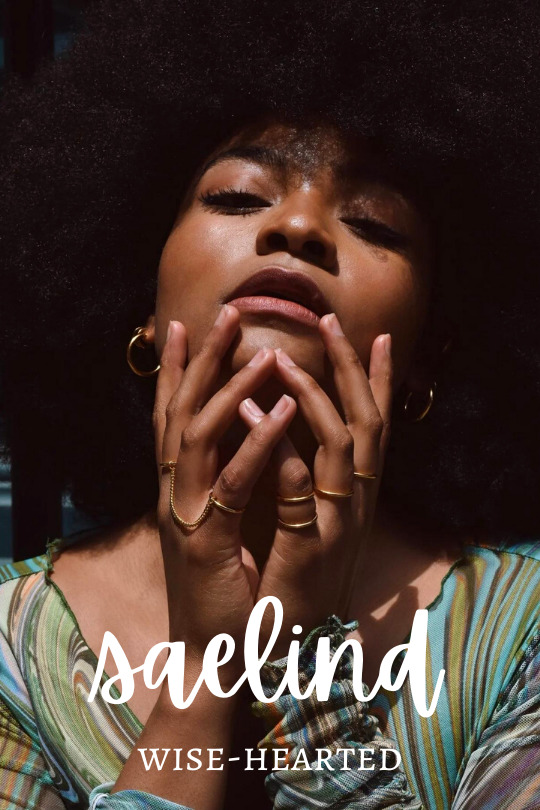
@tolkienofcolourweek day three | men | andreth saelind
Andreth was a woman of the House of Beor, the sister of Bregor father of Barahir (whose son was Beren One-hand the renowned). She was wise in thought, and learned in the lore of Men and their histories; for which reason the Eldar called her Saelind, ‘Wise-heart.’
#tocweek2023#tolkienedit#oneringnet#silmedit#silm#silmarillion#the silmarillion#andreth#andreth saelind#my edit#tefain nin
117 notes
·
View notes
Text
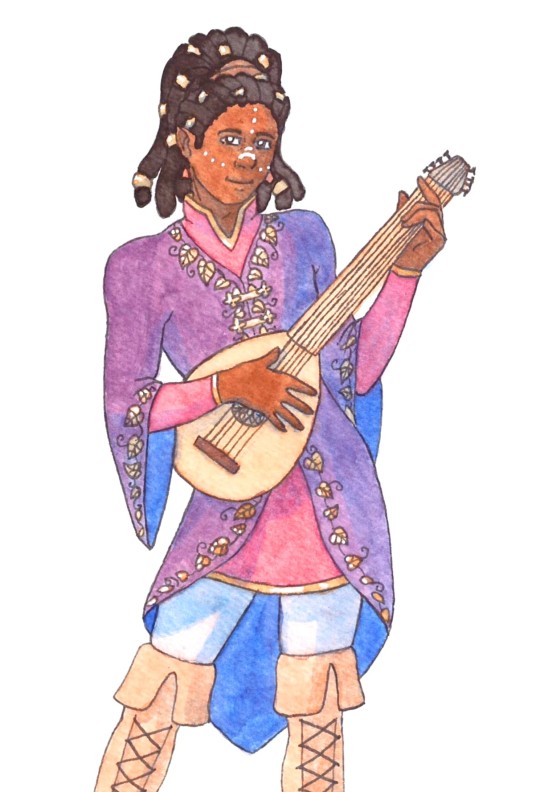
Day 4 of @tolkienofcolourweek - Daeron (theme: Music)
#tocweek2023#daeron#silmarillion#tolkien#fanart#bard#watercolour#traditional art#illustration#my favourite of this series :)#wyvunn art
62 notes
·
View notes
Text




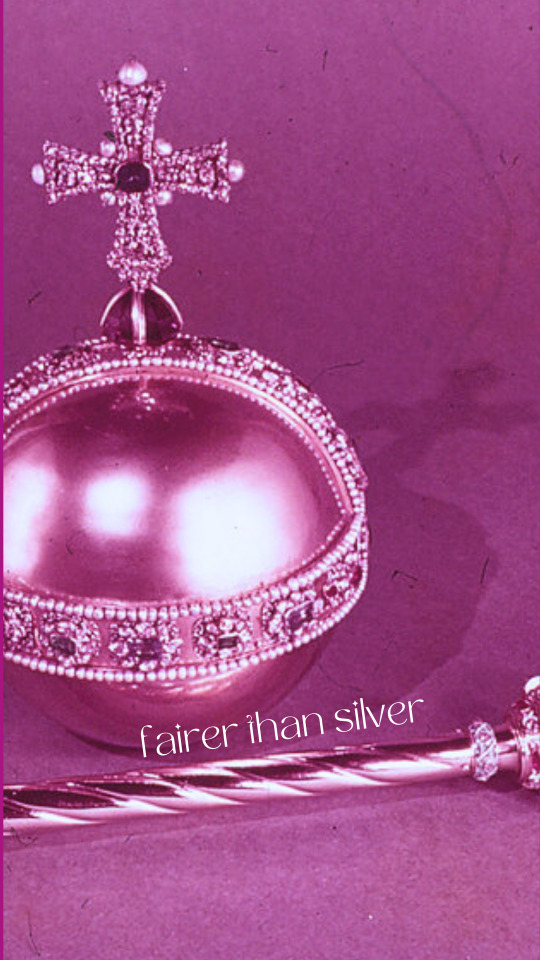
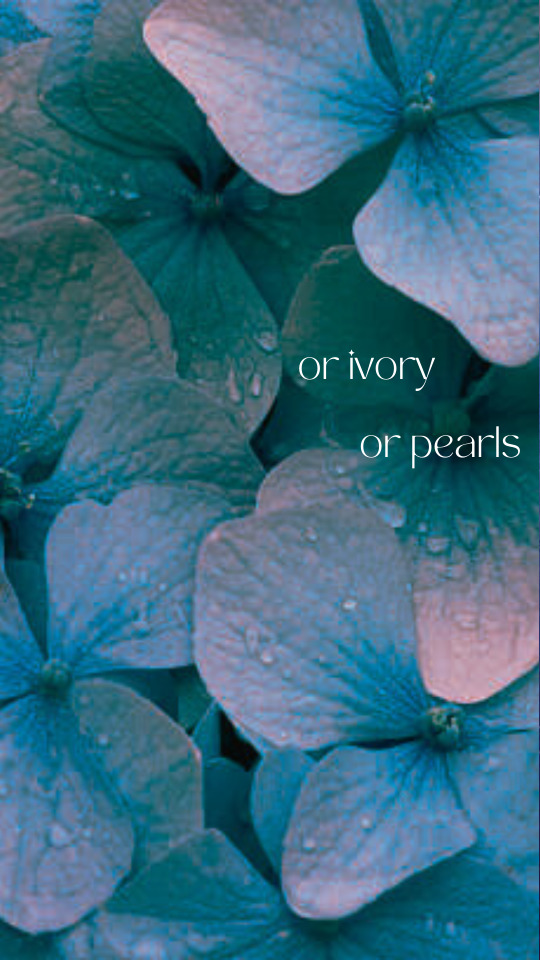
For @tolkienofcolourweek day 3 (Men | Ancestors/Descendants, Tradition, Stories): Tar Míriel and the fall of numenor
[images
1: water from above and below the surface. Text = And last of all the mounting wave
2: rows of mountains tinted purple. Text = climbing over the land
3: purple image of hands holding a tiara. Text = took to its bosom
4: right half of a face of a brown woman. She has purple / pink fabric over her head. She has pink eye makeup. Text = Tar Míriel the queen
5: purple pink image of orb and sceptre. Text = fairer than silver
6: blue flowers with some pink on the petals. Text = or ivory or pearls]
#tar miriel#silmarillion#tolkien women of colour#moodboards and edits#toi's creations#contains image description#tocweek2023#mepoc#userlyndeth#usertilions#userindomiel#tuserosie
67 notes
·
View notes
Text
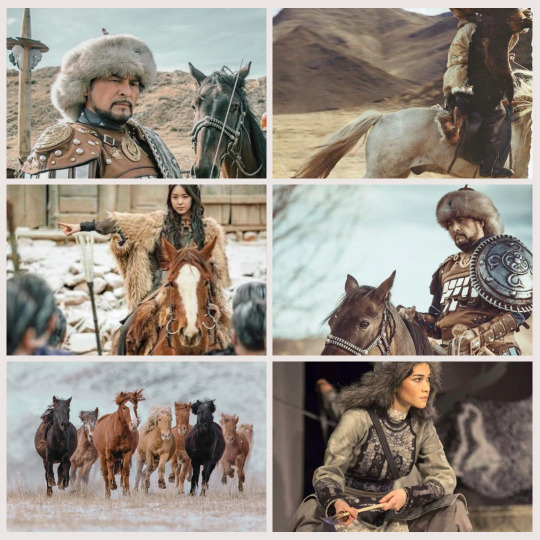
@tolkienofcolourweek
Day 3: Men-> Eomer, Eowyn, and the Rohirrim
55 notes
·
View notes
Text
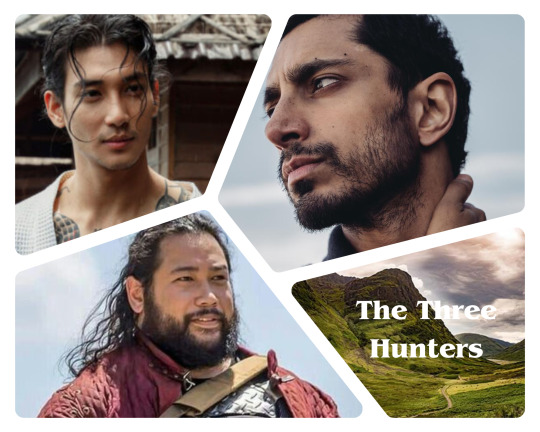
@tolkienofcolourweek Days 2, 3, & 4: Elves, Men, and Dwarves
Riz Ahmed as Aragorn
Paing Takhon as Legolas
Cooper Andrews as Gimli
31 notes
·
View notes
Text
Te Hōkioi, and Speculation on the Dietary Habits of the Great Eagles
He Hōkioi, i runga, he Hōkioi, i runga, hū.
(The great eagle, from above, made a booming call)
Kei te āputa koe, nā, o te rangi, e noho ana,
(In the open space, there, in the sky, it dwells)
Te hoa moenga, nō whatitiri mātakataka;
(Death's companion, with crashing thunder)
Hei aha, tērā, e tararua mārire, ona hikumaro?
(Why, then, do its tail feathers no longer split the quiet in two?)
Rua maro tonu, ona hakikau;
(Two fathoms wide, its wings;)
E huhū nei, i runga te rangi,
(It called, above in the sky)
Hōkioi, Hōkioi.
(The sound: hōkioi, hōkioi.)
- poem/chant by the great Ngāti Toa chief Te Rauparaha
For @tolkienofcolourweek, I'm spending seven days bringing Māoritanga and mātauranga Māori to the world of Tolkien! Starting off on day 1 with: what did Manwë's Eagles eat?
Such massive animals, especially flying ones, would have required a huge caloric intake. We have little evidence about what potential prey may have existed in Beleriand and Middle Earth. The Hobbit mentions them eating sheep, and it seems likely that they would hunt other large animals, such as deer or bison. But there's nothing in our modern world that compares to or fills an ecological niche like Manwë's Eagles.
This is where I draw on Māori oral history of the largest eagles to ever live.
In English they're called Haast's Eagles, but in Māori there are several names. Probably the most well-known of the Māori names is pouakai/poukai, but my people called them hōkioi.
They were massive, weighing as much as 17.8 kg (about 39 lbs) and with wingspans as large as 3 metres (about 10ft). Their feet and claws were the size of modern day tigers, capable of punching through bone. They hunted prey more than fifteen times their own size.
(Granted, the eagles of Manwë are much larger than even the hōkioi! Still, it's similar enough for me to draw inspiration.)


[Left image: an artist's rendition of a hōkioi perched on a rock. Right image: an artist's rendition of a hōkioi attacking the neck of a giant flightless bird.]
The hōkioi's primary prey was the moa, large flightless birds similar to ostriches or emus. With no large land mammals on the islands, hōkioi were the apex predators.
Then, circa 900 CE, large mammals came to Aotearoa for the first time. They also preyed on moa, reducing the hōkioi's food supply. So perhaps it was natural that the hōkioi began to hunt these mammals as new prey.
Unfortunately, those mammals were us.


[Left image: an artist's rendition of a hōkioi attacking a Māori man who holds a spear. Right image: an artist's rendition of a child running from a hōkioi.]
Our stories of the hōkioi, or pouakai, tell of giant birds that could swoop down from the sky to kill and eat even strong warriors. They were also known to carry off small children.
I'm not saying that the eagles of Manwë ate elves or humans. (I think they were probably given firm instructions not to!) It would make sense for them to prey on orcs and other creatures of Morgoth, though. And there's one other group who we know were hunted like animals in Beleriand, due to... misunderstandings. A group who the Eagles may not have initially recognized as sentient creatures. A group who would have been an ideal size to pick up and carry off as a snack.
I'm just saying, I think there may have been multiple reasons that dwarves chose to live underground.
-
(Sources for further information about te hōkioi:
The man-killer that fell from the sky
NZ Birds: Haast's Eagle)
#silmarillion#silm meta#the giant eagles#tocweek2023#māori-fying tolkien#mine#yes this is a little bit cracky#i fully acknowledge that#so please don't be weird in my notes and inbox#(also i SWEAR i haven't forgotten about my wips and i promise i'm working on them!)
79 notes
·
View notes
Text
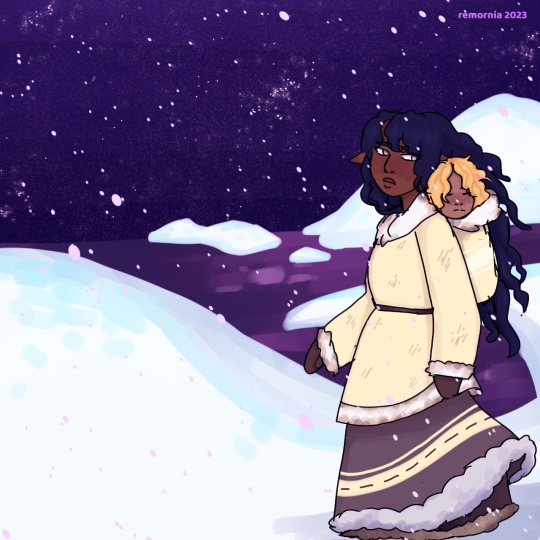
@tolkienofcolourweek Day 2: Elves/Journeys
Aredhel taking care of baby Idril on the Helcaraxë
84 notes
·
View notes
Text



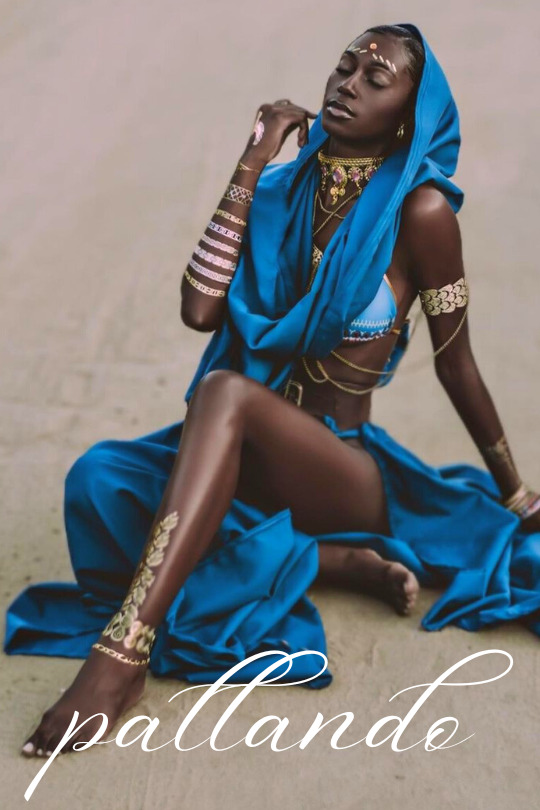
@tolkienofcolourweek day one | ainur | the blue wizards
Their task was to circumvent Sauron: to bring help to the few tribes of Men that had rebelled from Melkor-worship, to stir up rebellion and after his first fall to search out his hiding (in which they failed) and to cause dissension and disarray among the dark East... They must have had very great influence on the history of the Second Age and Third Age in weakening and disarraying the forces of East who would both in the Second Age and Third Age otherwise have outnumbered the West.
#tocweek2023#tolkienedit#oneringnet#silmedit#silm#silmarillion#blue wizards#ithryn luin#alatar#pallando#my edit#tefain nin
116 notes
·
View notes
Text
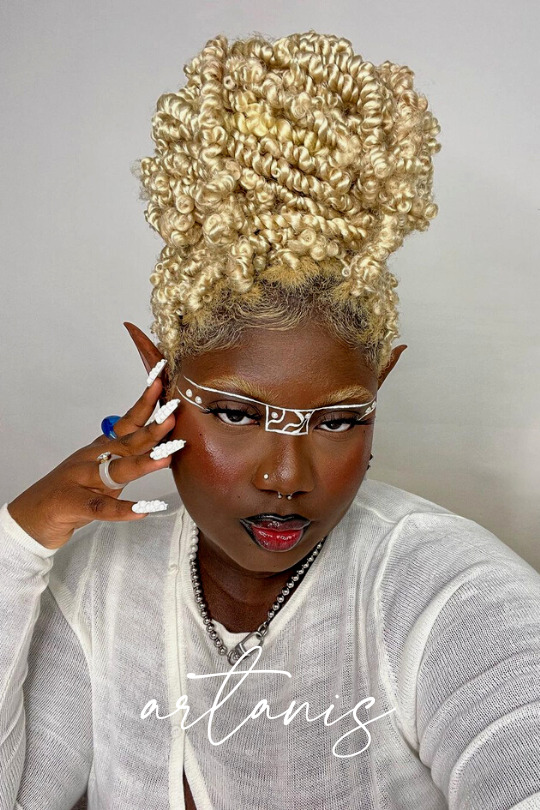
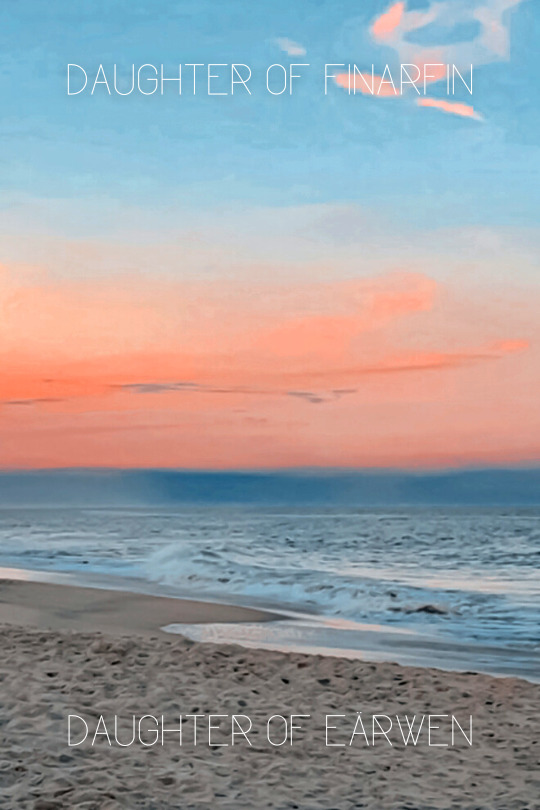

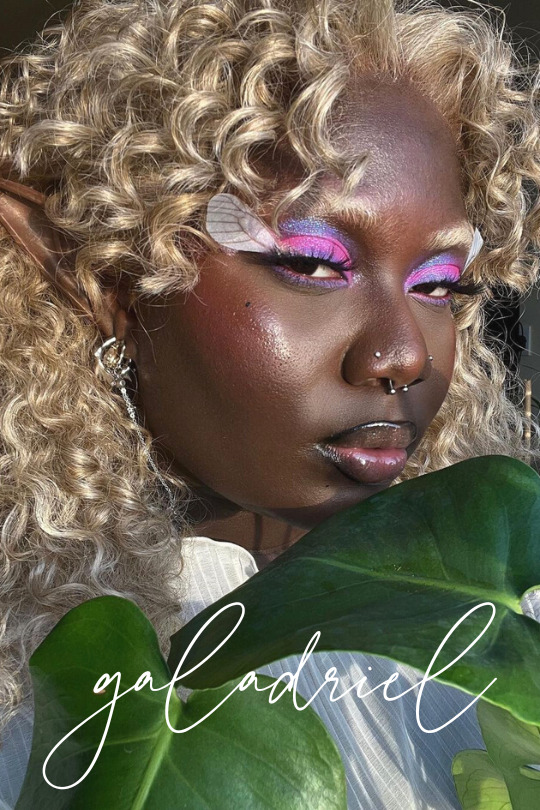
@tolkienofcolourweek day two | elves | galadriel
A sister they had, Galadriel, most beautiful of all the house of Finwë; her hair was lit with gold as though it had caught in a mesh the radiance of Laurelin.
#tocweek2023#tolkienedit#oneringnet#silmedit#lotredit#silm#lotr#lord of the rings#the silmarillion#silmarillion#galadriel#my edit#tefain nin#model: pradaolic
113 notes
·
View notes
Text


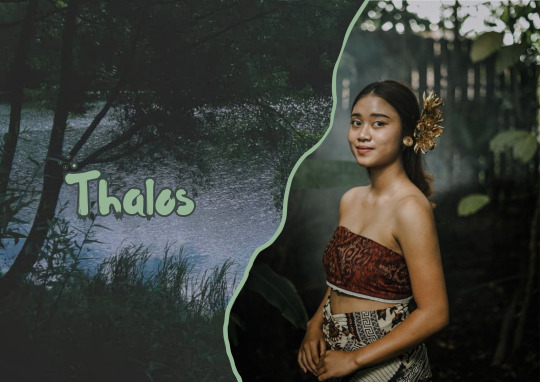
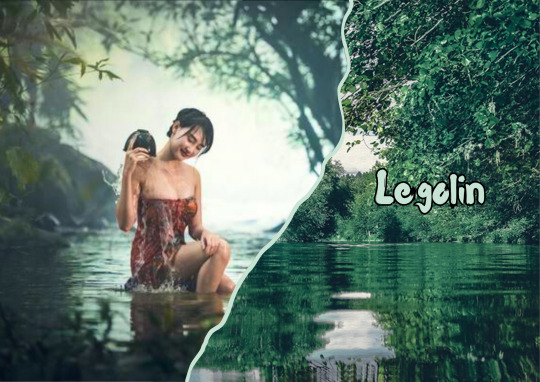


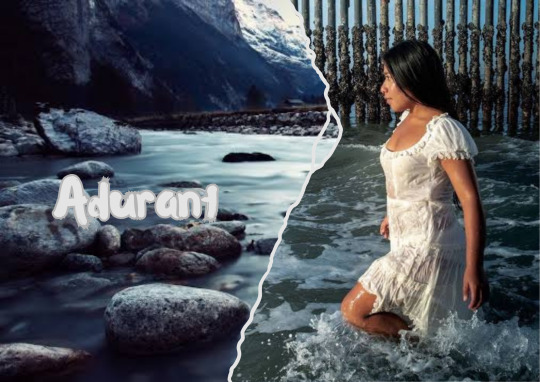
Rivers of Ossiriand
For day 2 of @tolkienofcolourweek
Part 22 of toi's indigenous tolkien series
[Image description: seven panels, all except the first panel are divided by a line shaped like the river
1. a hualapai woman standing in a river. on left is white lilies and text = Gelion
2. a black woman sitting on a rock in water. on right is a river between rocks, text = Ascar
3. young southeast asian woman. on left is a tree and river, text = Thalos
4. a southeast asian woman washing herself in a stream. on right is water under trees, text = Legolin
5. a black woman in a white dress underwater. on left is blue water, text = Brilthor
6. tajik woman with black braids. on right are white water flowers, text = Duilwen
7. brown latina woman wading in water. on left is a river in mountains, text = Adurant]
#rivers of ossiriand#silmarillion#tolkien women of colour#indigenous americas tolkien#black tolkien#southeast asian tolkien#central asian tolkien#latam + caribbean tolkien#moodboards and edits#toi's indigenous tolkien series#toi's creations#tocweek2023#usertilions#userindomiel#tuserosie#userlyndeth#(no pressure to reblog)
64 notes
·
View notes
Text


@tolkienofcolourweek day four | dwarves | balin
Instead there was a very old-looking dwarf on the step with a white beard and a scarlet hood; and he too hopped inside as soon as the door was open, just as if he had been invited. “I see they have begun to arrive already,” he said when he caught sight of Dwalin's green hood hanging up. He hung his red one next to it, and “Balin at your service!” he said with his hand on his breast.
#tocweek2023#tolkienedit#oneringnet#the hobbit#hobbit#th#lord of the rings#lotr#the lord of the rings#balin#my edit#tefain nin
62 notes
·
View notes